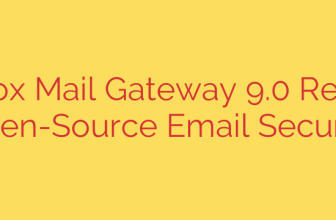
Beyond the Firewall: How Attackers Exploit AWS X-Ray for Stealthy Command & Control
In the sophisticated landscape of cloud security, attackers are constantly evolving, moving beyond noisy, easily detectable methods. The latest frontier is “living off the land”—using a target’s own legitimate tools and services against them. A new, alarmingly stealthy technique has emerged that turns a common AWS diagnostic service into a hidden channel for command and control (C2), completely bypassing traditional network defenses.
This method weaponizes AWS X-Ray, a service designed to help developers analyze and debug distributed applications. By exploiting its features, attackers can send commands to compromised resources and exfiltrate data without raising a single network firewall flag.
What is AWS X-Ray?
First, it’s essential to understand X-Ray’s intended purpose. In a modern microservices architecture, a single user request might travel through dozens of services (Lambda functions, EC2 instances, containers). X-Ray provides developers with a way to trace the path of that request, identifying performance bottlenecks and errors.
Developers instrument their applications with the X-Ray SDK, which sends data about each request—called “segments”—to the X-Ray service. These segments can include custom metadata called annotations, which are key-value pairs used for filtering and analysis. It is this legitimate feature that attackers have learned to abuse.
The Anatomy of the Attack: C2 via Trace Annotations
The attack is both simple and brilliant. It transforms the X-Ray service from a diagnostic tool into a covert messaging system. Here’s how it works:
Initial Compromise: The attacker first gains a foothold in the cloud environment, compromising a resource like an EC2 instance or a Lambda function that has IAM permissions to interact with AWS X-Ray.
Sending Commands: Instead of connecting to a malicious server on the internet, the attacker uses their own AWS account (or another compromised one) to send a trace segment to the target’s X-Ray service. The malicious command is embedded within the trace’s annotations. For example, an annotation could be
{"command": "whoami"}.The Implant Listens: The compromised resource (the “implant”) is programmed to periodically query the X-Ray service, searching for traces with specific annotations that signal a new command. It uses API calls like
GetTraceSummariesto find relevant trace IDs.Executing and Exfiltrating Data: Once a trace with a command is found, the implant executes it. The output of the command is then embedded as an annotation in a new trace segment, which is sent back to the X-Ray service. The attacker can then retrieve this trace from their own account to read the results.
Why This Method is So Dangerously Effective
This technique is exceptionally difficult to detect because it subverts conventional security models that are heavily reliant on network monitoring.
- Bypasses All Network Security: The compromised resource is only communicating with legitimate AWS service endpoints (
xray.region.amazonaws.com). This traffic is encrypted and trusted, making it invisible to firewalls, egress filtering rules, and network intrusion detection systems. - “Living off the Land” to the Extreme: The attack uses no custom C2 tools or suspicious domains. It relies entirely on the functionality of the AWS SDK and the X-Ray service, blending in perfectly with normal operational traffic.
- Leverages Common IAM Permissions: The permissions required (
xray:PutTraceSegments,xray:GetTraceSummaries,xray:BatchGetTraces) are often granted in broad strokes to allow applications to function. Security teams may not scrutinize these permissions as high-risk. - An Overlooked Data Plane: Security teams are trained to monitor control plane activity (via CloudTrail) and network traffic. They are not typically configured to inspect the contents of application-level data, such as X-Ray trace annotations, for malicious intent.
Actionable Defense Strategies to Protect Your Environment
Defending against this type of attack requires shifting focus from the network perimeter to IAM policies and behavioral analysis. Here are critical steps you can take today.
Enforce Strict IAM Least Privilege: This is your most powerful defense. Audit all IAM roles attached to your compute resources.
- Question every permission. Does an application truly need to read traces (
GetTraceSummaries,BatchGetTraces), or does it only need to write them (PutTraceSegments)? In most cases, an application only needs to send data to X-Ray. Restricting roles to write-only permissions effectively neutralizes this C2 channel. - Separate read and write permissions into different policies and apply them granularly.
- Question every permission. Does an application truly need to read traces (
Monitor CloudTrail for Anomalous Behavior: While the C2 data itself isn’t in CloudTrail, the API calls used to fetch commands are.
- Create alerts for suspicious API calls. An EC2 instance or Lambda function that is part of a production web application should not be making frequent
GetTraceSummariesorBatchGetTracescalls. This is unusual behavior that warrants immediate investigation. - Focus on detecting patterns. A resource periodically polling for traces is a major red flag.
- Create alerts for suspicious API calls. An EC2 instance or Lambda function that is part of a production web application should not be making frequent
Utilize VPC Endpoints: By configuring a VPC Interface Endpoint for AWS X-Ray, you can force all communication with the service to stay within the AWS network. While this doesn’t stop the attack itself, it prevents a compromised resource from sending data directly to the public internet, adding a valuable layer of containment.
Implement Behavioral Anomaly Detection: Advanced security tools can build a baseline of normal API call activity for each role and resource. When a resource suddenly starts interacting with X-Ray in a new and unexpected way, these systems can flag the behavior as a potential indicator of compromise.
As attackers continue to integrate their tactics with the very fabric of the cloud, our defenses must evolve. By focusing on identity, auditing API behavior, and implementing a zero-trust mindset, organizations can build resilience against even the most clandestine threats hiding in plain sight.
Source: https://securityaffairs.com/182968/hacking/ghost-in-the-cloud-weaponizing-aws-x-ray-for-command-control.html







